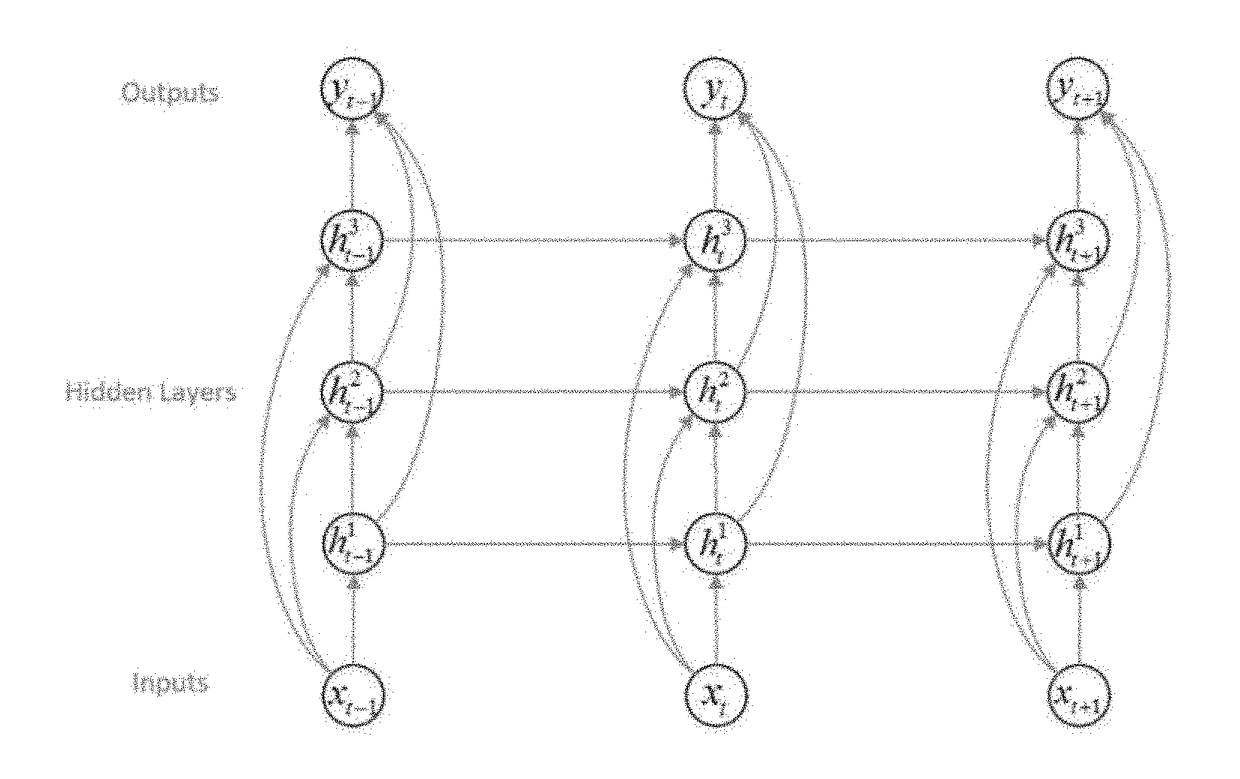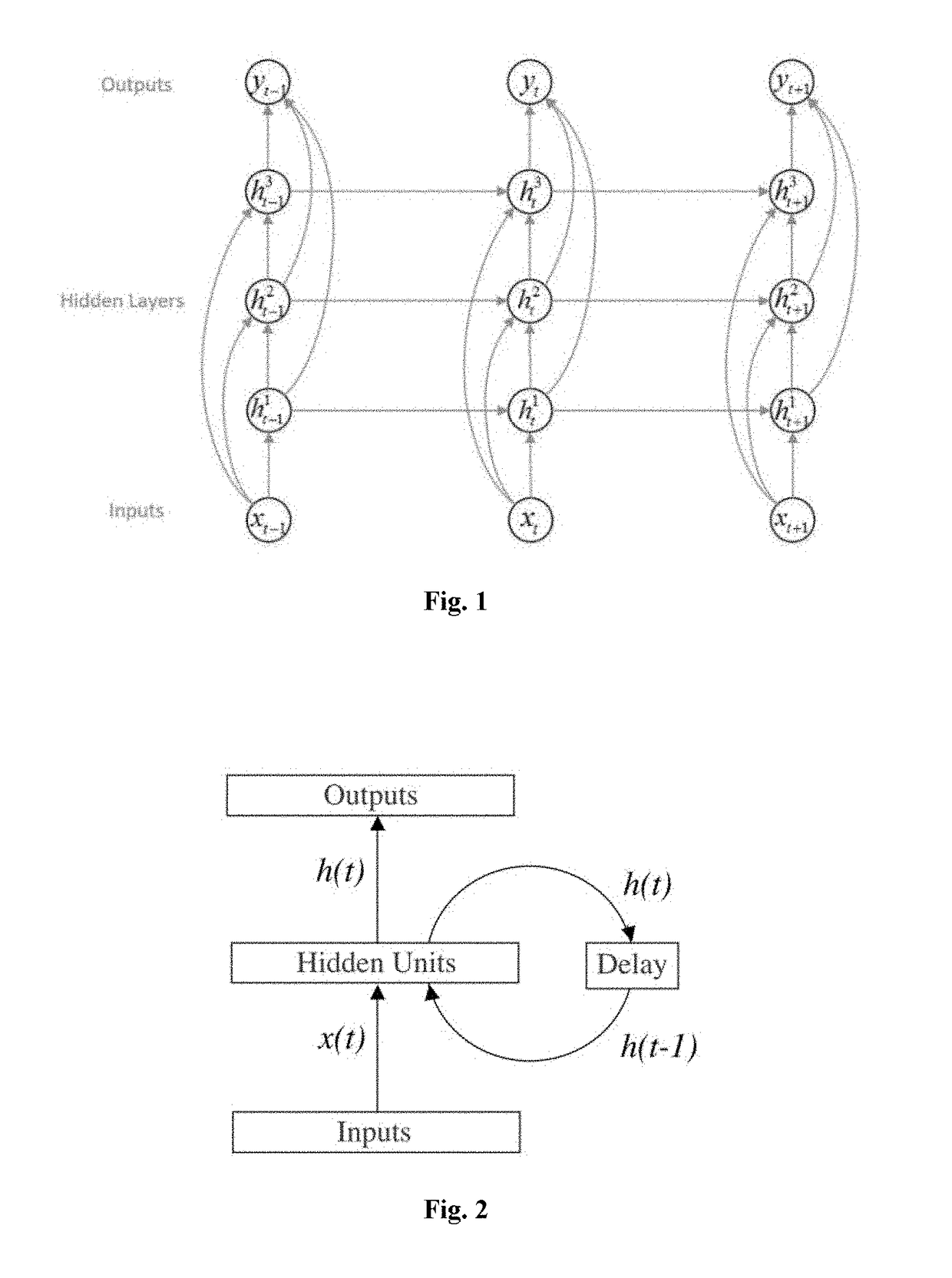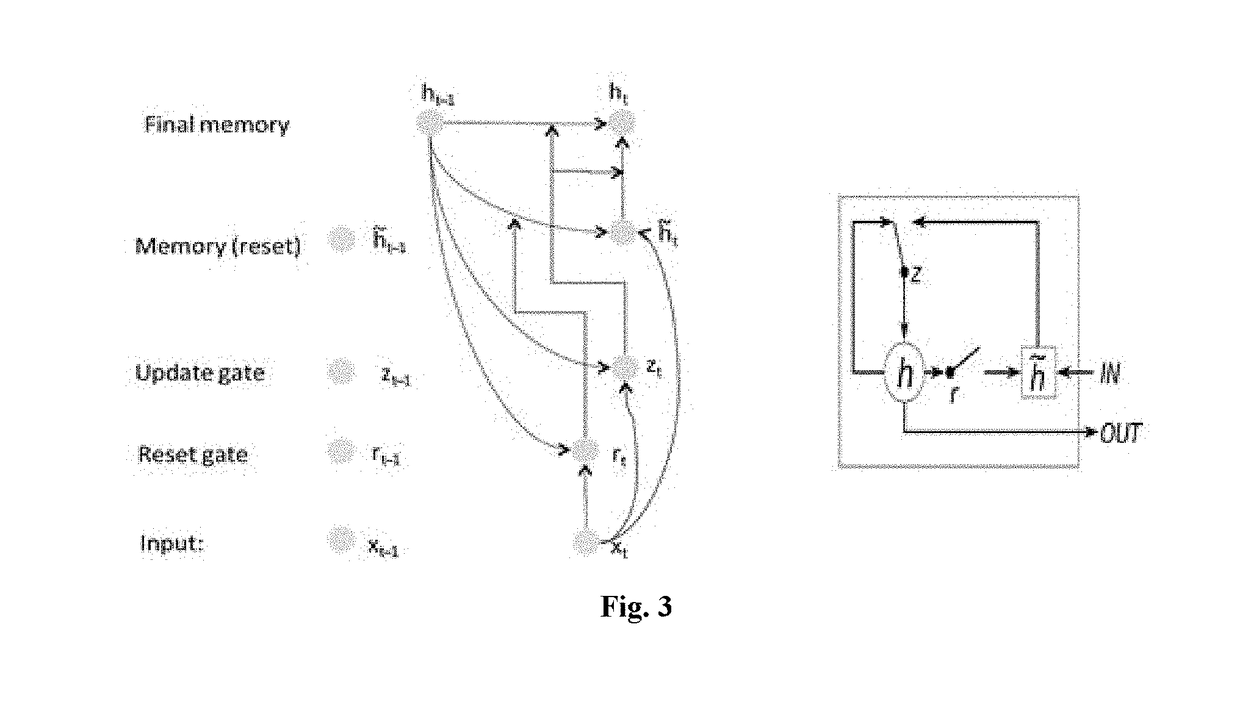Hardware accelerator for compressed gru on FPGA
a hardware accelerator and compressed neural network technology, applied in the field of artificial neural networks, can solve the problems of limited acceleration ratio achieved by general purpose processors (cpu or gpu), and the inability of general purpose processors to fully take advantage of compressed neural network sparsity,
- Summary
- Abstract
- Description
- Claims
- Application Information
AI Technical Summary
Benefits of technology
Problems solved by technology
Method used
Image
Examples
example 1
[0178]Now, an example is given to better illustrate the general work principle of computations conducted on the hardware acceleration of the present technical disclosure. In the example, 2 PEs (PE0 and PE1) are used to perform a matrix-vector multiplication, wherein the GRU is stored in CCS format.
[0179]The sparsity of the compressed matrix is imbalanced, leading to a low efficiency of computation resource.
[0180]FIG. 11 shows how to compute the matrix W and input vector on the basis of the hardware design of the present technical disclosure.
[0181]As shown in FIG. 11, the input vector contains 6 elements {a0, a1, a2, a3, a4, a5, a6}, and the weight matrix contains 8×6 elements. As there are 2 PEs to calculate a3×w[3], where a3 is the fourth element in the input vector and w[3] represents the fourth column in the weight matrix.
[0182]As shown in FIG. 11, the workloads in PEs are different. PE0 performs 3 multiply-add operations while PE1 is required to take only 1 multiply-add.
[0183]Co...
example 2
[0194]This example is used to illustrate how to achieve a balance between I / O bandwidth and PEs.
[0195]When the bandwidth of memory interface is 512-bit and its frequency is 250 Mhz, the weight data is 8-bit, PE's frequency is 200 MHz, the required extent of parallelism is PE_num≦ddr_width*freq_ddr / (freq_PE*data_bit)=512*250 / 200 / 8=80.
[0196]In a GRU network with 2048*1024 dimension weight matrix and 1024 dimension input vector, whatever sparsity is, matrix-vector multiplication is still the most time-consuming operation. In case of parallel operation, time consumption of zt, rt, and ht computation can be covered by WxXt and Uhht−1 matrix-vector multiplication. Due to the pipeline design of successive element-wise multiplication and accumulation, the required resource is relatively little.
[0197]In conclusion, the present technical disclosure takes advantages of sparsity of weight matrix, balance between IO and computation, pipeline design, which can accelerate sparse GRU network algori...
PUM
 Login to View More
Login to View More Abstract
Description
Claims
Application Information
 Login to View More
Login to View More - R&D
- Intellectual Property
- Life Sciences
- Materials
- Tech Scout
- Unparalleled Data Quality
- Higher Quality Content
- 60% Fewer Hallucinations
Browse by: Latest US Patents, China's latest patents, Technical Efficacy Thesaurus, Application Domain, Technology Topic, Popular Technical Reports.
© 2025 PatSnap. All rights reserved.Legal|Privacy policy|Modern Slavery Act Transparency Statement|Sitemap|About US| Contact US: help@patsnap.com



